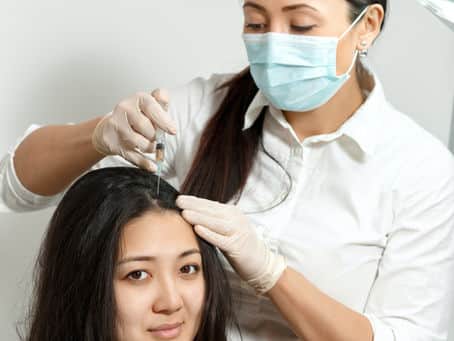Hair loss affects millions of people worldwide, and while there are various treatments and solutions available, not all are equally effective for every individual. One increasingly popular treatment for hair loss is Platelet-Rich Plasma (PRP) therapy, a non-surgical procedure that uses your own blood to stimulate hair growth. But when is the right time to consider PRP for hair regrowth, and which types of hair loss does it address?
Today, we’ll discuss the ideal timing for PRP therapy and the specific hair loss conditions it can effectively treat:
When to Consider PRP for Hair Regrowth
The effectiveness of PRP therapy largely depends on the timing of the treatment. Here are some guidelines to help you determine when to consider PRP for hair regrowth:
1. Early Stages of Hair Loss
PRP therapy is most effective when used during the early stages of hair loss. This is because PRP stimulates existing hair follicles to produce thicker, healthier hair rather than creating new hair follicles. If you wait too long, the hair follicles may become dormant or completely inactive, making it difficult for PRP therapy to have the desired effect.
2. After Trying Other Treatments
If you’ve already tried other hair loss treatments, such as minoxidil or finasteride, without success, PRP therapy may be a suitable alternative. Some people do not respond well to these medications, or they may experience undesirable side effects, making PRP therapy a more appealing option.
3. When Hair Transplant Is Not an Option
For individuals who are not suitable candidates for hair transplant surgery, PRP therapy can be a viable option. This may include people with diffuse hair loss patterns, insufficient donor hair, or those who have medical contraindications to surgery.
Types of Hair Loss PRP Addresses
PRP therapy can be effective for various types of hair loss conditions. Here are some of the most common hair loss conditions it can address:
1. Androgenetic Alopecia
Also known as male or female pattern baldness, androgenetic alopecia is the most common form of hair loss. PRP therapy has shown promising results in treating this condition by stimulating hair follicles to produce thicker, healthier hair.
2. Alopecia Areata
This is an autoimmune disorder that causes hair to fall out in small, round patches on the scalp. PRP therapy has been shown to improve hair regrowth in people with alopecia areata by reducing inflammation and promoting hair follicle health.
3. Telogen Effluvium
This is a temporary hair loss condition caused by stress, nutritional deficiencies, or hormonal imbalances. PRP therapy can help restore hair growth in individuals with telogen effluvium by promoting the transition of hair follicles from the resting phase to the active growth phase.
4. Traction Alopecia
Lastly, this type of hair loss is caused by excessive tension or pulling on the hair, often due to hairstyles such as tight braids or ponytails. PRP therapy can help treat traction alopecia by stimulating the damaged hair follicles to produce new, healthy hair.
Conclusion
Overall, PRP therapy can be an effective treatment option for individuals experiencing various types of hair loss, particularly when used in the early stages of hair loss or as an alternative to other treatments. That said, to determine if PRP therapy is right for you, consult with a qualified medical professional who can assess your specific hair loss condition and recommend the best course of action. Remember, early intervention is key to achieving the best results with PRP therapy for hair regrowth.
Kaya Medical Aesthetics is a physician-run med spa in Hershey, offering all the services you need to overcome various issues, from large pores, double-chin, sunspots, and more. If you are looking for PRP hair restoration services, get in touch with us today!


